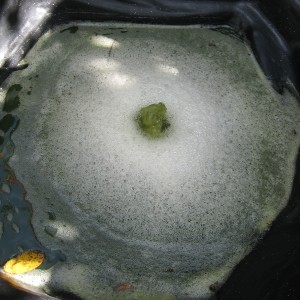Evaluation of the biochemical composition and antioxidant activity of preparation based on pigments extracted from the remaining biomass of Arthrospira platensis

Accepted: September 1, 2023
All claims expressed in this article are solely those of the authors and do not necessarily represent those of their affiliated organizations, or those of the publisher, the editors and the reviewers. Any product that may be evaluated in this article or claim that may be made by its manufacturer is not guaranteed or endorsed by the publisher.
Authors
Biotechnological research is currently focused on obtaining preparations based on natural pigments due to their properties and positive impact on human and animal health. Thus, this study aimed to evaluate the biochemical composition and antioxidant activity of the preparation based on pigments obtained from the remaining biomass of Arthrospira platensis. The obtained results established that the preparation is characterized by a high content of β-carotene, lutein, chlorophyll pigments, and sulfated polysaccharides. Due to its composition, the preparation also possesses high antioxidant activity and the catalase and superoxide dismutase enzymes. These findings highlight the high biological value of the new preparation and the enormous potential for implementation in medicine, the animal husbandry sector, and the food and cosmetic industry.
How to Cite

This work is licensed under a Creative Commons Attribution-NonCommercial 4.0 International License.
PAGEPress has chosen to apply the Creative Commons Attribution NonCommercial 4.0 International License (CC BY-NC 4.0) to all manuscripts to be published.

 https://doi.org/10.4081/jbr.2023.11425
https://doi.org/10.4081/jbr.2023.11425



